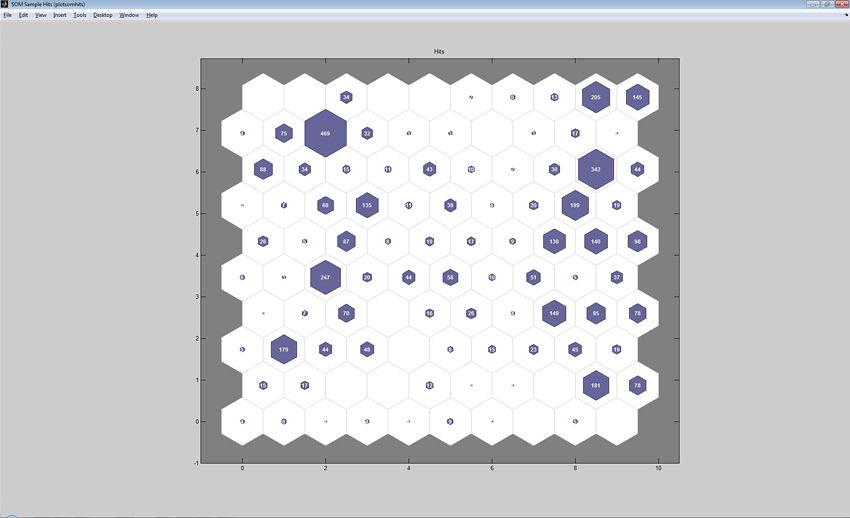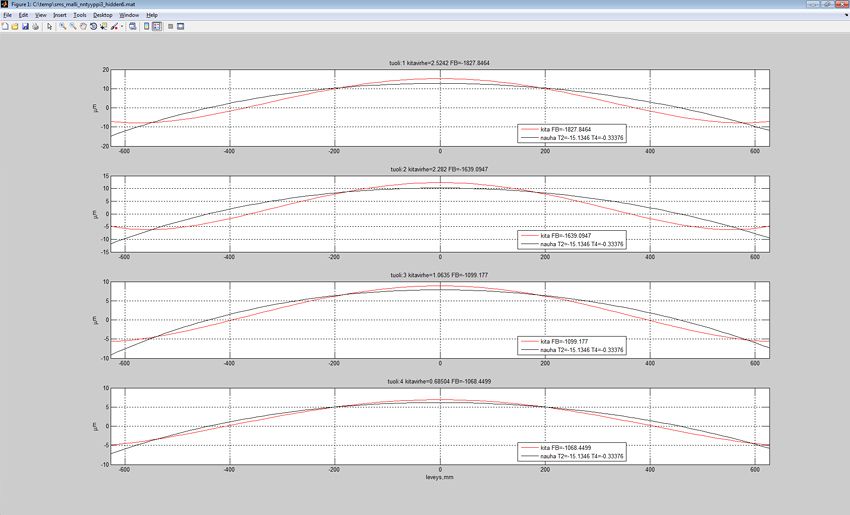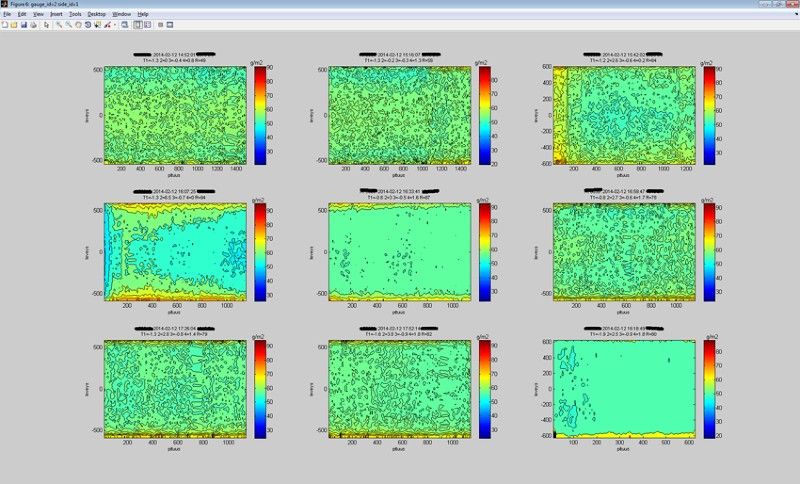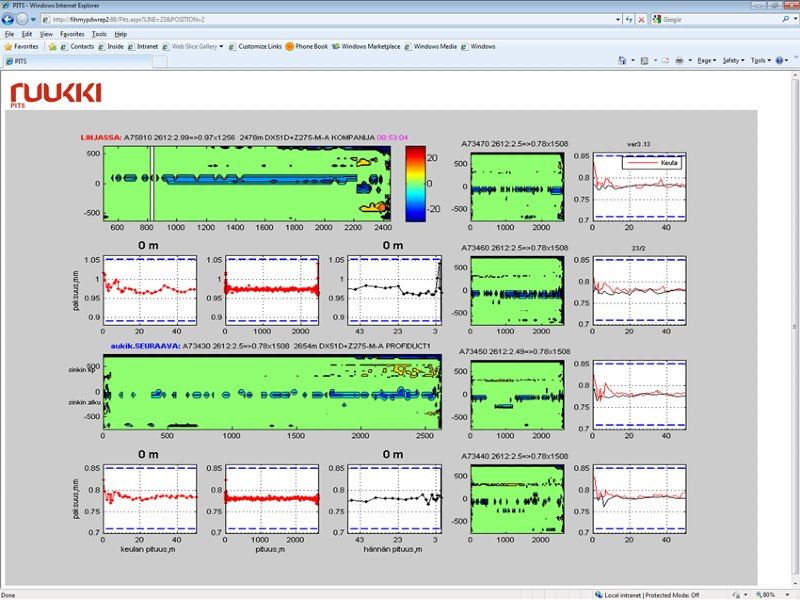Deploying Standalone and Web-Based MATLAB Applications to Improve the Steel Manufacturing Process
By Mika Judin, Ruukki
The mass production of high-quality steel products requires a combination of time-tested manufacturing practices and modern technology. As steel coils pass through the rolling, galvanizing, color coating, and other lines in a steel manufacturing plant, operators must set oven temperatures, line speeds, and alignments based on the characteristics of each coil and the desired thickness and flatness profile. Failure to properly set up a line results in excess scrap. It can also damage the ovens and cause the line to be shut down for several days.
At Ruukki Metals, we built and deployed a web application with MATLAB® that enables operators to select and apply the proper settings throughout the steel manufacturing process. We built a second, standalone MATLAB application that our engineers use to aggregate and analyze production metrics from multiple databases, track individual coils, and refine our process.
Since deploying these applications, we have had a much more consistent and efficient process, with less scrap, improved flatness, and a shorter off-gauge length. For example, in the temper mill, the off-gauge length—the amount of a coil that does not achieve the target thickness—has been reduced from several meters to 50 centimeters or less. Key to these improvements were regular optimizations of setup calculation parameters, and data visualization in MATLAB. The power of these MATLAB visualizations for detecting deviant coils cannot be exaggerated.
Identifying Potential Process Improvements
Line speeds and temperatures must be adjusted to keep the thickness and flatness of each coil within required tolerances. Before MATLAB based web applications were available, our operators relied on their own experience, personal notes, and judgment for this work. With multiple shifts running each day, this practice led to inconsistent results.
Once coils had been processed, it was difficult and time-consuming for engineers to determine what settings had been used for any particular coil or set of coils. For example, to check the thickness at the cold-rolling mill, the output after galvanizing, and the transverse thickness profile, they typically spent days collecting the necessary data, processing it, and producing the plots needed to understand the results.
Analyzing Big Data with MATLAB and Neural Networks
At the heart of our new process is a set of data warehouses that we use to store and access information about the coils as they pass through the plant. A Microsoft® SQL based data warehouse stores thickness tolerances, dimensions, the raw material class for each coil, and the coil’s intended customer. A Wonderware® Historian data warehouse stores time-series data for the coil’s thickness and flatness and other process measurements. An Oracle® based data warehouse stores defects or anomalies detected and test results in a coil. All together, up to 4000 different measurements may be stored for each of the 60,000 coils processed annually.
With MATLAB and Database Toolbox™, we developed an application that retrieves data from each database, merges it in a separate Microsoft Access database, and creates documentation as needed. When a new coil is about to be processed in the line, this application analyzes the merged and stored data to calculate oven temperatures and other parameters used to set up equipment. In the galvanneal process, for example, the application uses a neural network created with Neural Network Toolbox™ to calculate setup values.
We relied on Neural Network Toolbox to implement a number of other key application features. We used self-organizing maps to classify coils by zinc mass, iron percentage, and flatness (Figure 1).
We also used Neural Network Toolbox to create a neural model. The model generates roll gap predictions based on finite element methods (FEM) (Figure 2).
In total, we created more than 30 different MATLAB applications for analyzing, visualizing, and exporting data for coils in the production chain. This data includes thickness, flatness, transverse profiles, raw material quality, and other characteristics (Figure 3).
Deploying Applications
We used MATLAB Compiler™ to create a desktop application that provides easy access to the data analysis and visualization applications in MATLAB that we had developed. Thanks to our use of JDBC drivers, no ODBC database connections were needed, and we did not have to use database wizards to create a database connection for the applications. Engineers can install and run this application from any PC without having to install MATLAB. Currently, more than 20 engineers are using it to gain insights into how our production chain is working today and how it might be improved in the future. Using this application, analyses that took days to complete manually can be completed in less than a minute.
We also created a web-based application, accessible via any web browser on our network, that line operators can use to view the data they need to monitor and set up the line (Figure 4). To build this .NET application, we packaged our MATLAB code as a DLL using MATLAB Builder™ NE. The DLL retrieves information from our database and creates plots that are sent as bitstreams to the main application, hosted on a Microsoft Internet Information Services (IIS) web server.
Using this application, our operators are prepared to make the necessary adjustments before each new coil enters a line. Since deploying this application and the standalone executable that we created with MATLAB and MATLAB Compiler, we have seen fewer misalignments, less scrap, and significant increases in efficiency and consistency at the plant.
Recently, we used MATLAB to model the bending process during cold-rolling in the temper and tandem mill, and we performed simulations that have enabled us to improve the flatness of coils coming out of this process. MATLAB provides a powerful tool for accessing FEM models like COMSOL Multiphysics®. We have created several applications that use a COMSOL-MATLAB link that enables us to input values to an FEM model and visualize results from COMSOL.
Published 2014 - 92193v00



